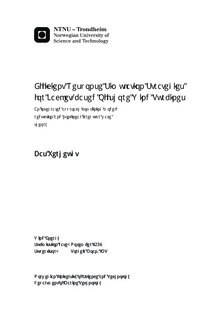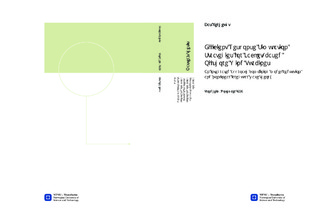| dc.description.abstract | The offshore wind industry has been growing exponentially over the last two decades, thereby establishing itself as one of the most promising alternative energy sources. Technological developments are required to reach ambitious cost reduction targets, set to decrease the industry s dependency on governmental support. One way to cut costs is by the implementation of a more accurate hydrodynamic model, resulting in less uncertainty and consequently in a more efficient foundation design. Two key trends are identified in the development of new offshore wind parks. Firstly, the turbine size increases and secondly, the parks are being built further offshore. Both trends cause the jacket to become increasing popular with respect to the monopile foundation.
Considering the modeling of the foundation, the geometrical complexity of the jacket makes the design more computationally expensive than for a monopile. The challenge is to keep the model to manageable proportions while incorporating sufficient accuracy, both in wave and structural modeling. The goal of this thesis is therefore to develop an integrated calculation strategy to accurately and efficiently determine the fatigue loads on a jacket-based offshore wind turbine. To this end, a nonlinear irregular wave model is implemented and the Morison equation is used to translate wave kinematics to nodal forces in the jacket model. Furthermore, different model reduction techniques are considered to determine the optimal calculation strategy of the response to the hydrodynamic loading.
The nonlinear wave model is compared to the linear model in terms of response of the jacket for a case study of a site in the German Bight. It is found that the nonlinear model induces 1% to 6% stress increase in the jacket members, depending on the location of the specific member. The stress increase is most pronounced in the splash zone. When considering the amount of kinetic energy triggered by both models, it is demonstrated that the nonlinear model can have a significant contribution to the dynamic response of the jacket. A sensitivity study shows that the eigenfrequencies and damping of the structure play an important role in the response, both in absolute as well as in relative (nonlinear vs. linear) terms.
In the quest for an optimal reduced model three types of models are considered: Guyan, Craig-Bampton (CB) and Augmented Craig-Bampton (ACB). The models are compared in terms of their spectral and spatial convergence with respect to the full model. It is found that the fixed interface vibration modes significantly improve the spectral convergence of the reduced model. To also ensure a high spatial convergence the addition of Modal Truncation Augmentation vectors (MTAs) proves to be essential. Models containing these load case specific modes yield a very small error in terms of potential energy (max. 0.08%), compared to the full model. By clustering the load cases it was found that even a single reduced model containing generic MTAs produces only a small error (max. 1%). To be able to accurately describe the combined wave-wind loading it is recommended to include both fixed interface vibration modes and MTAs.
The reduced model approach reveals its added value when considering the computational times: an averaged size reduced model (± 400 DoF) performs the dynamic simulation nearly ten times faster than the full model (± 1300 DoF). The calculation time of the nonlinear wave model (Tc = 200 s) causes an increase with respect to the linear model (Tc = 110 s) for the wave load generation. However, in the light of the complete analysis, including the dynamic simulation (Tc = 30 min) using a reduced model, the gain in accuracy outweighs the relatively small increase in computational time.
Summarizing, the nonlinear irregular wave model is successfully implemented and the difference in terms of dynamic response is quantified with respect to the linear model. A model reduction strategy is developed which provides an optimal composition of the reduction basis, in terms of accuracy and computational efficiency. These two tools together provide an efficient, integrated calculation strategy for the dynamic fatigue load analysis of a jacket-based OWT subjected to nonlinear irregular wave loading, thereby fulfilling the thesis objective. | |

